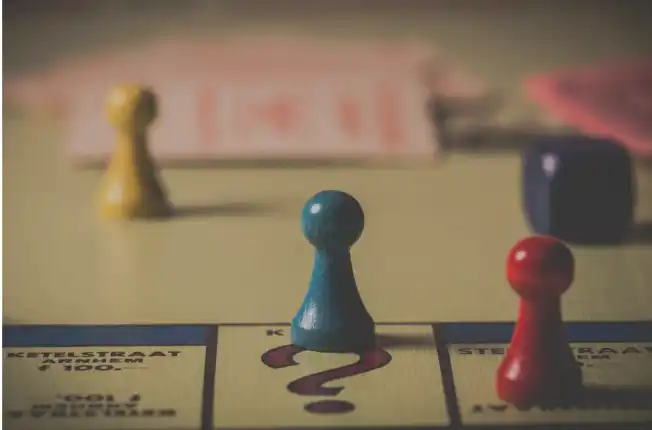The Quiet Comeback of Low Spec Gaming
There is a certain magic in running a great game on a modest machine. No RGB floodlights, no giant GPU. Just you, a cup of something warm, and a game that respects your time and your hardware. Low spec gaming never really died. It just learned to whisper. And if you listen closely, you can hear the good stuff again.
That whisper often sounds like a neat little puzzle that loads in seconds, teaches you one rule, and then twists your brain in a dozen delightful ways. I keep a small folder on my desktop labeled “Coffee Games” for these moments. It’s my morning reset button. Discovering new titles is half the fun, and places like PuzzleFree.Game make that hunt simple and oddly satisfying, like browsing a tiny record shop where every crate has something you actually want to play.

Why Low Spec Gaming Still Matters
A lot of modern games ask you to install half your SSD before you even press start. That’s fine when you want a blockbuster weekend, but it leaves zero room for the small, tasty experiences that fit into life’s in-between spaces. Low spec gaming is about those in-between spaces. Ten minutes before a call. Twenty minutes on the train. A quiet half hour before bed.
More importantly, it invites you to notice what really makes a game feel good. Not the ray-traced reflections, but the clarity of an idea. The satisfying rhythm of learning a system. The little “aha” that lands exactly when you think you’re stuck. When the frame budget is tight, designers trim the fat and leave a core that’s often more flavorful.
Puzzle Games Make Old PCs Feel New
Puzzle designers working with simple visuals can put all their calories into how a level unfolds. The screen looks clean because it needs to be, and your laptop fan barely spins up. You can alt-tab without fear. Save anywhere. Walk away easily. Come back just as easily. Small experiences do not fight your life. They slip into it.
There’s a second bonus. Puzzle games age well. You can revisit them years later and they feel crisp, not creaky. The rules did not change. The input delay did not creep in. What you learn is yours to keep.
How To Build A Smooth Setup Without Upgrades
You do not need new parts to make old hardware feel friendly. You need small habits.
- Play windowed at a sane resolution. 900p or 720p on a laptop often looks sharper than you expect and keeps input delay low.
- Lock the frame rate. A steady 30 or 60 beats wild spikes. Stability feels fast.
- Favor games with instant boot. If a title jumps from desktop to first move in under five seconds, it wins.
- Use keyboard first. For many puzzle and strategy games, a keyboard is snappier than a controller.
- Keep a tiny backlog. Two or three short games at a time. Rotate often. Clear, finish, replace.
These tweaks are not glamorous, but they build a seamless loop. Click, play, smile, quit. No ritual, no ritual fatigue.
Genres That Play Beautifully On Modest Machines
If you want to go slightly off the main road, try these pockets of delight:
- Micro puzzlers. Levels that teach through play, rarely more than a few screens. Perfect for a five-minute coffee.
- Turn based tactics. Chess energy without the chess lore. Good design here favors readability and smart choices over special effects.
- Sokoban-likes and tile pushers. Pure logic. No timers. Immune to aging.
- Rule benders. Games where you rewrite or rewire the rules level by level. They demand thought, not teraflops.
- Narrative vignettes. Short stories you can finish at lunch, often with a single clever mechanic that carries the mood.
None of these need horsepower. They need attention, and they reward it generously.
Make Your Own Challenges
A lovely thing about small games is how easily they accept your house rules. A few ideas I rotate:
- Three life mornings. You get three failures before work. If you solve the level first, you earn a second cup.
- Silent runs. Turn off music, leave effects on low, and see if the audio hints still guide you.
- One notebook rule. Keep a pocket page for any game that teaches a new symbol or pathing trick. Re-reading later often triggers fresh insights.
- Daily level replay. Pick one level you love and replay it once a day for a week. Watch how your solution shrinks.
This is the opposite of grind. It is ritual. Small, repeatable, and personal.
A Short List To Keep You Honest
Here is a checklist I use when deciding if a game belongs on my low spec shelf:
- Loads to playable in under ten seconds on a mid-old laptop
- Explains itself without long tutorials
- Runs well at 720p with vsync on
- Saves instantly and quits instantly
- No loud launchers or invasive updates
- One clear mechanic that deepens rather than expands
If a game hits four out of six, it is a keeper. If it hits all six, it moves to the dock.
The Joy Of Constraint
Constraints are not a curse in games. They are a taste choice. Like cooking with five ingredients instead of fifteen. When you reduce the recipe, flavor stops hiding. That’s what low spec gaming gives back to you. You taste design again. You notice how one animation sells an idea. You feel how a sound cue trims hesitation. You respect a level that lets you discover, not just follow.
You also gain something rare in the modern entertainment diet. Closure. The loop ends. The credits roll. Your brain gets to stamp the experience as complete and move on with a tiny sense of victory that large live-service games often dilute.
Finding The Good Stuff
Curating is half the hobby. Browse small, trusted corners. Read a single paragraph, not a thousand words. Watch a gif, not a trailer. Let the mechanic, not the marketing, convince you. Keep a folder for demos and itch-style experiments. Delete ruthlessly. Keep only what sparks curiosity after the first minute.
There is plenty of noise in gaming. The trick is to build a path where the signal arrives quickly, and often. That is what makes low spec gaming feel modern, not retro. It is efficient. It respects time and attention, and it gives back more than it takes.
Closing The Lid
The best thing I can say about this way of playing is simple. It fits. Into a day, into a laptop, into a life. You do not wait for a patch. You do not clear a schedule. You just play. One neat rule, one neat level, and a small grin when the solution clicks into place.
If you have been away from games because everything looked too big, try going smaller on purpose. Start with one tidy puzzle, one clean tactic, one quiet vignette. Let your machine breathe. Let yourself breathe, too. When the hardware stops being the story, the game finally gets to speak. And often, in that whisper, you will hear exactly what you were missing.













